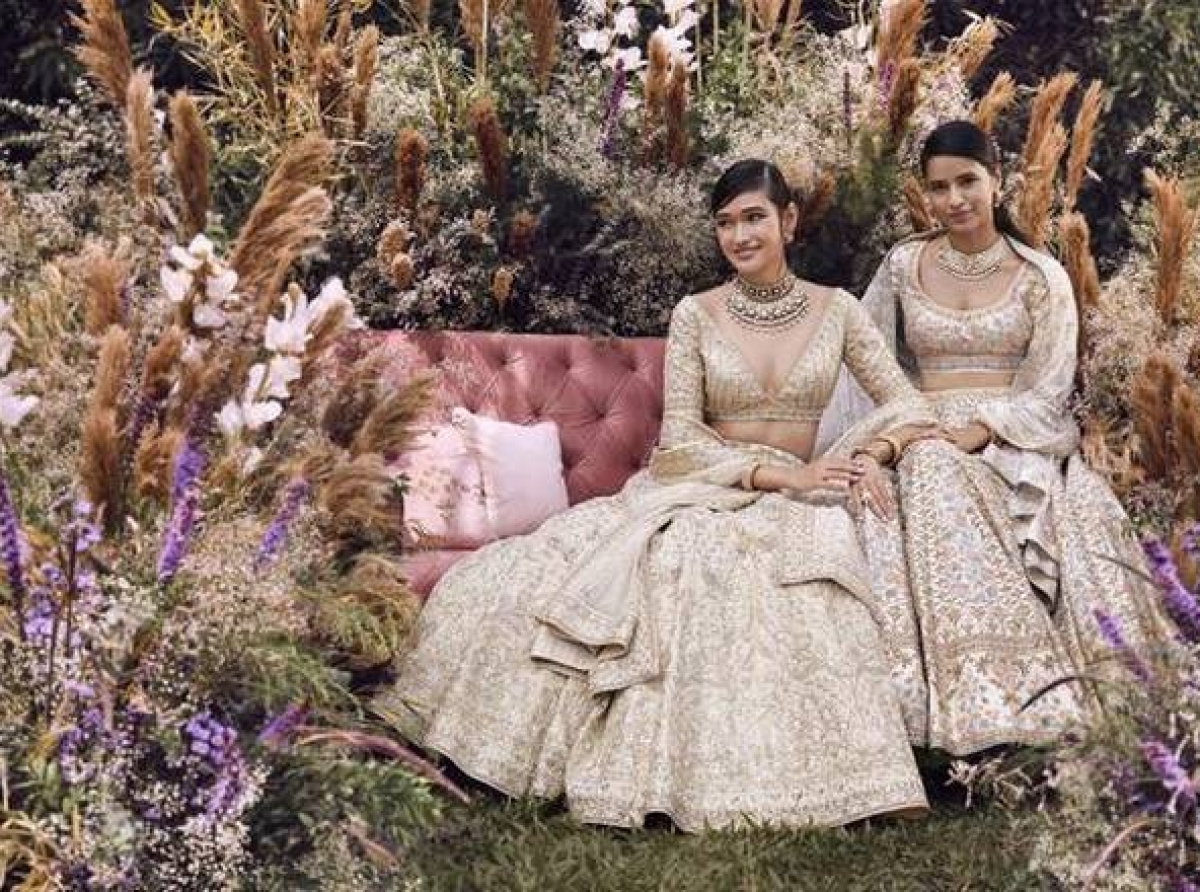24 June 2023, Mumbai
Indian fashion designers are redefining the industry with their fusion of Indian culture and contemporary elements, showcasing their exceptional craftsmanship.
From everyday wear to opulent bridal couture, their ability to create wearable yet unique pieces sets them apart. While some have gained global recognition with their talented design teams, others work behind the scenes, contributing their skills to renowned fashion houses like Versace, Hermès, Christian Louboutin, Gucci, Prada, and Dior.
Manish Malhotra: India's Wealthiest Fashion Designer
Manish Malhotra reigns as India's wealthiest fashion designer, but he is not alone at the top. Tarun Tahiliani, Ritu Kumar, Rohit Bal, Sabyasachi Mukherjee, Neeta Lulla, Masaba Gupta, Anamika Khanna, and Anita Dongre have also carved their own paths, attracting loyal customers worldwide with their unique selling propositions.
Synergistic Partnerships: A Win-Win for Designers and Corporates
A growing trend among designers is partnering with corporate giants and companies with technical expertise to expand globally and penetrate smaller Indian towns. These collaborations benefit both parties, accelerating growth beyond what they could achieve individually.
For example, Tarun Tahiliani secured funding from the Aditya Birla Fashion and Retail Group (ABFRL) due to his long-standing relationship with Chairman Kumar Mangalam Birla, a loyal customer of Tahiliani's Ensemble. ABFRL also acquired a 51% stake in House of Masaba Lifestyle, owned by designer Masaba Gupta, known for its apparel, personal care products, and accessories.
Reliance Brands acquired controlling stakes in Ritu Kumar, Abu Jani Sandeep Khosla, and Manish Malhotra. These strategic investments are reshaping the luxury market. Previously, Kishore Biyani's Future Group held a 23% stake in Anita Dongre, which was later sold to private equity firm General Atlantic.
Tradition, Modernity, and Variations in Rural and Urban Populations
Indian fashion designers skillfully fuse tradition and modernity, infusing their creations with vibrant colors, intricate craftsmanship, and luxurious textiles. Inspired by the country's bustling markets, majestic temples, and vibrant attire, their distinctive styles capture the essence of India.
Tradition meets Modernity
While foreign designers and brands have influenced Indian fashion, introducing elements of corporate dressing, Indian designers have embraced the trend with a contemporary twist, resulting in the fusion wear trend
Exploring Clothing Behavior and the Impact of Mass Media
This article delves into the dynamic clothing behavior of individuals, specifically investigating the influence of mass media on clothing selection, stitching, and embroidery.
The primary objective is to uncover variations in clothing patterns between rural and urban populations, focusing on the intricate interplay between tradition and modernity.
Shaping future
By examining the driving forces behind changing clothing trends, such as technology and mass media, the study reveals that mass media, particularly through silver screen broadcasts, wields considerable influence in shaping public preferences and inspiring emerging designs and fashion trends. Furthermore, peer pressure contributes significantly to the adoption of trendy clothing styles.
The study observes a contrasting perception of present clothing trends between the older and younger generations, with the former considering them immodest and attention-seeking while the latter embraces contemporary fashion.
This divide can be attributed to the elderly's affinity for traditional clothing styles and the younger generation's inclination towards Western fashion trends that prioritize aesthetics and comfort. Additionally, middle-aged individuals are gradually accepting the value and comfort offered by trendy clothes.
The study underscores the significance of clothing trends in the context of tradition and modernity, particularly among respondents from upper castes. However, respondents from Scheduled Castes and Backward Castes perceive present clothing trends as immodest to a significant extent, despite acknowledging their aesthetic and comfortable qualities.
Clothing trends are influenced by various interconnected factors, including age, social class, caste, education, and geographical location.
The prevalence of Western or trendy clothes is higher in urban areas compared to rural areas, suggesting a gradual assimilation of Western fashion into Indian society without completely replacing traditional attire.
Socio-fabric
The level of assimilation varies based on the socio-economic characteristics of villages or wards. Notably, Western clothes, especially t-shirts and parallel pants, are popular choices due to their comfort and are worn both indoors and outdoors.
Rural respondents primarily utilize them as indoor wear, while urban respondents incorporate them into their everyday attire.
Inspiring India
India boasts a wealth of talented designers who seamlessly blend reverence for age-old traditions with innovative aesthetics.
From Icons to Rising Stars
The Diverse Spectrum of Indian Fashion; From industry veterans like Ritu Kumar, who has been shaping Indian fashion since 1969, to rising stars like Kanika Goyal and Priyanka Ella Lorena Lama, the spectrum of Indian fashion encompasses ornate bridal ensembles and minimalist day-wear, creating a truly extraordinary range of styles.
Expanding Luxury Market and Shifting Focus
The global luxury fashion market is valued at $1.53 billion in 2023, projected to grow at a CAGR of 1.32% from 2023 to 2028, according to Statistica. Indian luxury fashion houses have transitioned from solely targeting global markets to becoming significant domestic consumer markets for apparel and accessories.
International brands are now forging partnerships with Indian corporate houses, while renowned designers are increasingly prioritizing the domestic market over the global and non-residential Indian (NRI) market.
Capitalizing on Growing Affluence
Knight Frank's Wealth Report 2023 forecasts a remarkable 58.4% increase in India's ultra-high-net-worth individuals and individuals with a net worth exceeding $30 million, rising from 12,069 in 2022 to 19,119 by 2027.
These partnerships allow designers to leverage their understanding of affluent Indian customers and benefit from corporate houses' expertise in digital platforms, retail operations, marketing, and supply chain management. Simultaneously, corporate houses provide a platform for designers and local artistic talent to merge with their well-established global presence in fashion and luxury retail.
The Path to Effective Collaborations and Future Growth
To thrive in global markets, Indian designers must meet various requirements and adopt forward-thinking approaches, addressing issues like green-washing and responsible sourcing.
Success requires meticulous attention to detail. As the competition intensifies, expect more mergers and innovative strategies to propel the industry forward.

























